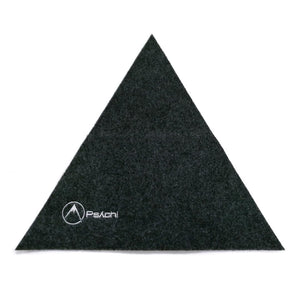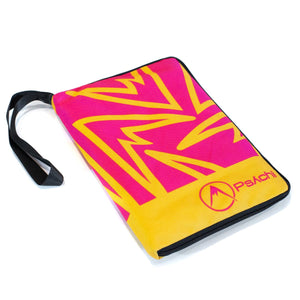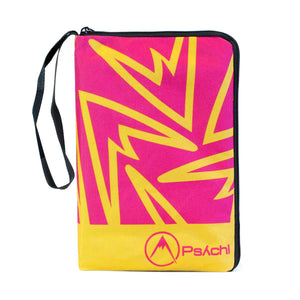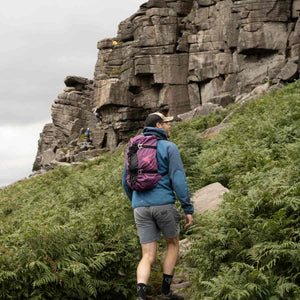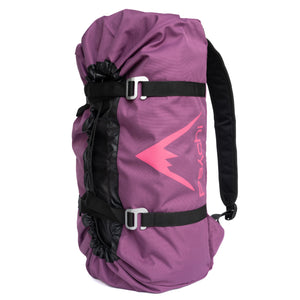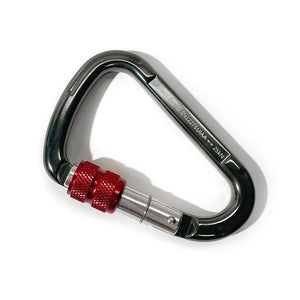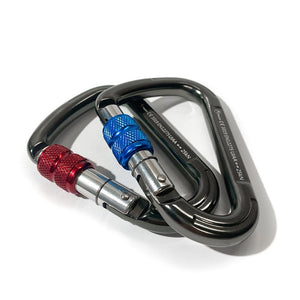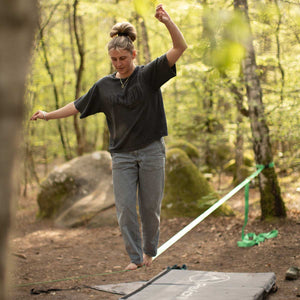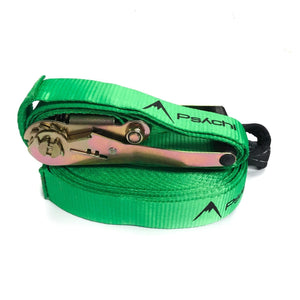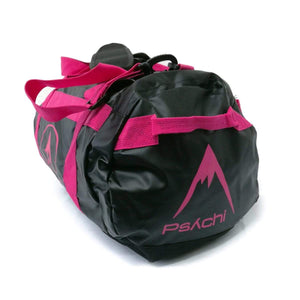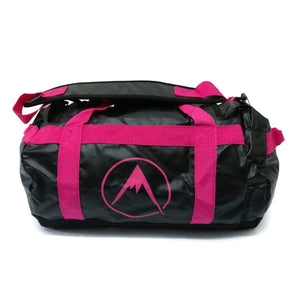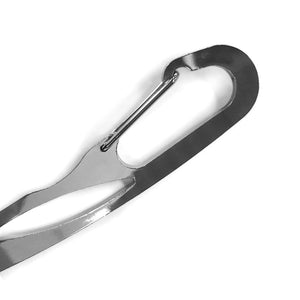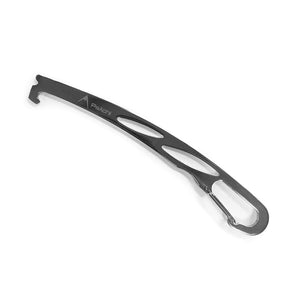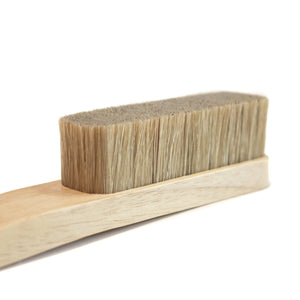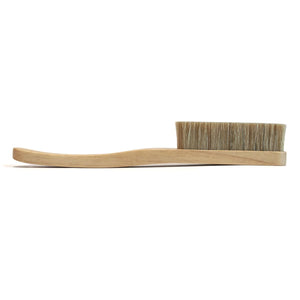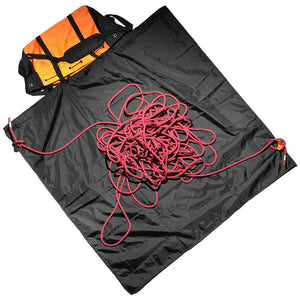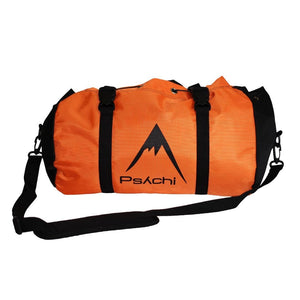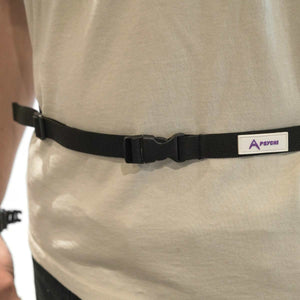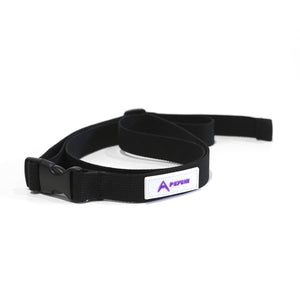7 TIPS FOR YOUR FIRST TIME CLIMBING OUTDOORS
Eventually, whether somebody is new to climbing or not, most climbers will venture outdoors onto real rock. If this is you, or soon to be you, you won’t regret it. Outdoor climbing offers so much more in climbing route variation, difficulty and skill learning, plus; the views are always worth the journey. If you’ve spent all of your time at indoor walls then the tips in this guide may be just what you need, climbing outside has differences and similarities to indoors so some things will be the same, others may be new to you. Either way, it’s time to play out!
TRAVEL LIGHT
Getting your gear together is always necessary but taking the right gear for your trip is important. You wouldn’t, let’s say, lug a full rack of trad gear up a mountain with you if you were only going sport climbing. If you’re headed out for a day outside, you don’t really need more than:
- Climbing gear: This would be your shoes, harness, belay device, quick draws, chalk and rope. If you don’t actually own any gear aside from your shoes and chalk bag, don’t sweat it, your group will help you out but it is recommended you at least own your own harness; a friend may have one for you to borrow but if it doesn’t fit you properly then it’s added risk and a potentially wasted day.
- Food and water: Protein and carbs are a must, you won’t need endless supplies but you will be hungry. Also, remember than one litre of water weighs a kilogram so take this into consideration if you have a longer or more punishing approach before you even start climbing.
- First aid kit: At least one person in your group should be carrying a basic first aid kit. Better safe than sorry!
- Portable charging device: You can get signal coverage most places now but that’s pretty useless if your battery dies, a phone charger will keep your phone powered through the day, just in case.
DRESS FOR THE WEATHER (BUT A COAT IS ALWAYS HANDY)
I’ll bet you, you and your group have been checking the weather for days leading up to your trip, making sure that the conditions will be right for your particular crag. Be sensible and dress appropriately for the weather you will expect but as a guy who lives in the north of England, a warm jacket is never too much, the weather can change quickly out in the mountains and the wilder places so having something warm and waterproof is a great save if the day gets rained off out of nowhere.
RESPECT THE ROPE
Your ropes role doesn’t need much explaining, it takes you up and stops you coming back down fast. If you don’t own your own rope then this applies to whoever’s rope is taking you up the walls; don’t leave it laying in the mud and don’t walk all over it, that’s how you ruin good equipment. Most rope bags will come with a special waterproof sheet for you to lay down which keeps your rope nice and clean because a clean rope is a happy rope. If you don’t have a sheet handy then a dry grassy patch or a rock will suffice so long as there is no potential for the rope to tangle while being used.
Either a rope bucket or ground sheet is helpful for keeping rope clean and dry
ROCKS HAVE FEELINGS TOO
The rock you climb deserves your respect and to be cared for so that many who will follow will be able to enjoy it too and while climbing is fun and engaging for us, it can be punishing for the rocks we climb so it is generally encouraged that excessive brushing, using wire brushes and chalking to dry holds is kept to a minimum as it will eventually polish holds smooth and undermine the rocks integrity. This can cause holds to break away as well as have knock on effects for the other patrons of our crags, wildlife.
FALLING WITH STYLE
You may not have taken a fall while indoor climbing but it’s an important thing to know about. Falling is scary, not going to lie but it’s also a skill and a handy one to have on real rock. Practicing how to fall at an indoor climbing centre will help prepare you for any potential to fall outdoors and give you the skills necessary to respond to a fall appropriately, minimising the risks to yourself and your belayer.
CARE FOR THE OUTDOORS
Be respectful of local access rules and the rules of your governing mountaineering council. A lot of crags fall on private land as well as nationally protected lands so the usual rules of keeping noise levels low, not bothering local farm/wildlife and cleaning up after yourself/others are paramount. Some crags may not be accessible during certain times of the year due to use by endangered wildlife or for game keeping, please respect these rules as the relationships built up with private landowners and outdoor groups is what keeps our sport alive.
This was found within two minutes of looking down at the ground, more was brought down than this.
SAFETY FIRST (LISTED LAST)
Making sure you are climbing safely is priority for any duo or group heading out. Always remember to have at least one experienced climber with your group who can teach you the basic safety practices that come with climbing outdoors. The main thing you should be aware of and responsible for is always each other. Safety practices such as checking equipment for damage and wear, wearing a helmet, knowing basic first aid and having a phone for emergencies should be observed. Nobody wants to be hurt outdoors but it does happen so risk reduction should be a practice any budding outdoor climber starts to observe from the first trip out. Please refer to your local mountaineering councils crag rules if you are unsure of what rules you need to adhere to.
With climbing becoming more mainstream following its acceptance into the Tokyo 2020 Olympics, there will inevitably be a surge in people accessing crags and quarries to climb. This added traffic has a potential to see a rise in littering, damage to rock as well as the surrounding land and disturbance of wildlife so the development of good climbing and outdoor ethics should be observed sooner rather than later. We are all responsible for respecting our countryside, wildlife and our crags so getting people educated and being responsible is of great importance. Climbing comes with danger like any other extreme sport but like any extreme sport there are ways to reduce risk and lessen the dangers of injury. Getting outdoors is one of the best things about climbing and personally, playing out in the mountains is pretty good for the soul. Even if you don’t get to send on the day, being out and learning is certainly worth the trip.
BMC Crag code: http://bit.ly/2pfSlQC
British Countryside Code: http://bit.ly/1Ih9ucz
By Gerard Savage-West
Social Media:
Instagram: climbcentric
Twitter: @ClimbCentric




